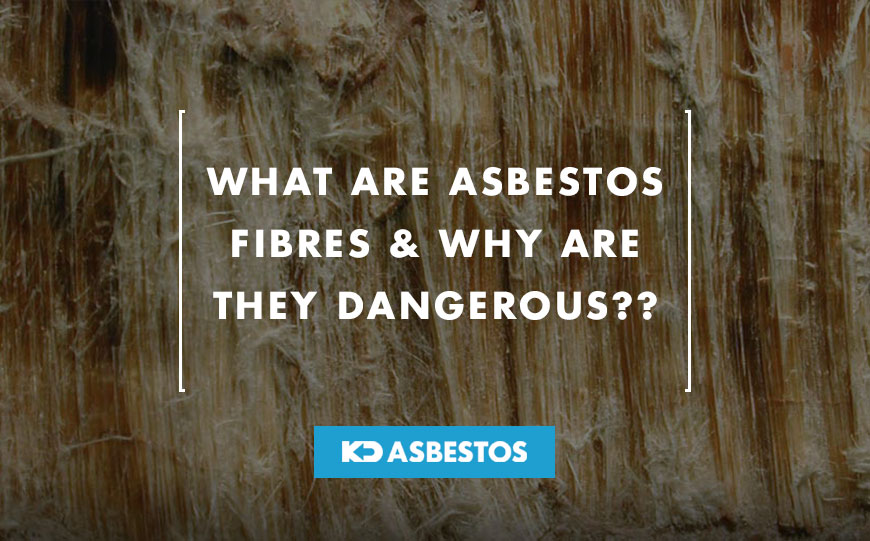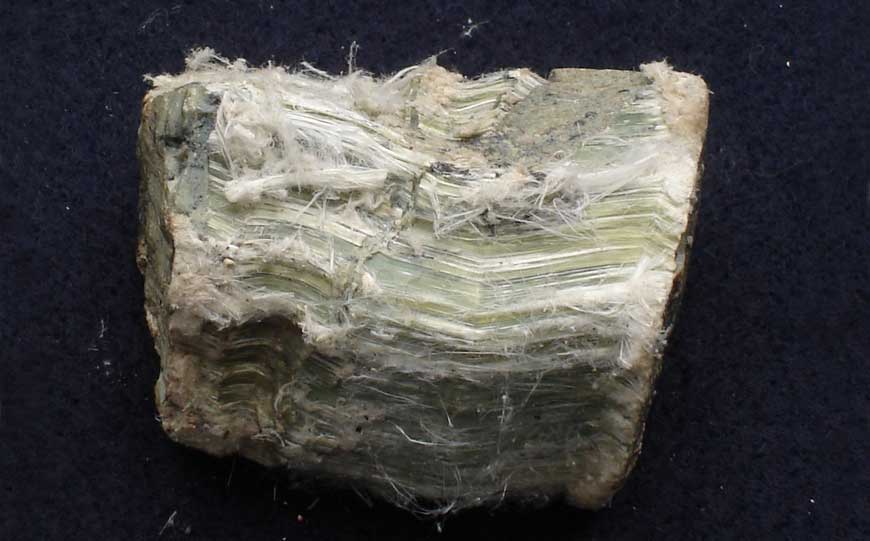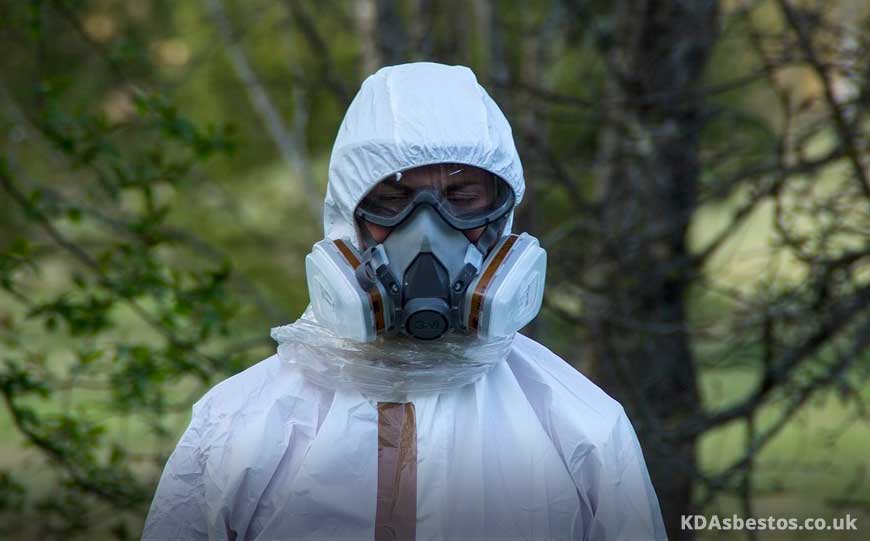
Asbestos fibres, once hailed for their remarkable versatility and fire-resistant qualities, now stand as a grim reminder of the hidden dangers lurking within seemingly innocuous materials.
In this article, we embark on a journey to uncover the true nature of asbestos fibres – examining their composition, unravelling the intricate web of hazards they unleash, understanding the range of problems they can unleash, delving into the perilous routes of inhalation, and finally, unveiling the crucial armour of protective measures.
Join us as we shine a light on this microscopic menace that has reshaped the perception of safety in our modern world.
Table of Contents
What are Asbestos Fibres?
Asbestos fibres, which are minuscule and nearly invisible mineral particles, gained significant popularity due to their remarkable properties.
These fibres were extensively employed in the construction and manufacturing industries for their exceptional heat resistance, durability, and insulating qualities.
Asbestos exists in various forms, with the primary types being chrysotile, amosite, and crocidolite.
Chrysotile, often referred to as white asbestos, was the most commonly used type.

It was prized for its flexibility and heat-resistant properties.
Amosite, known as brown asbestos, was appreciated for its resistance to acid and fire, making it suitable for insulation and construction materials.
Crocidolite, or blue asbestos, possessed impressive tensile strength and resistance to electricity, leading to its application in electrical insulation and textiles.
Despite their diverse applications and benefits, the use of asbestos fibres has become a cause for concern due to the significant health risks they pose.
This alarming revelation has led to increased awareness and stringent regulations regarding their use.
Why are Asbestos Fibres Dangerous?
Asbestos fibres present a considerable danger primarily because of their potential to become airborne when disturbed.
These tiny fibres are so lightweight that even minor disturbances, like drilling, sanding, or simply natural degradation, can release them into the air.
Once airborne, these fibres can be easily inhaled, and it is this inhalation that poses severe health risks.
When asbestos fibres are breathed in, they can penetrate deep into the lungs and even reach the delicate air sacs.
Over time, these fibres can cause inflammation, scarring, and serious health complications.
The most significant concern associated with asbestos exposure is the development of various lung diseases.
While asbestos use has significantly diminished in recent decades and regulations have been enacted to limit its presence in new products, the legacy of its past widespread use still lingers.
Many older buildings and materials, such as insulation, flooring, roofing, and even some household items, may still contain asbestos.
This is why proper precautions and awareness are essential when working with or around potentially asbestos-containing materials, especially in older structures.
What Problems Can Asbestos Fibres Cause?
Exposure to asbestos fibres can lead to a range of serious and often life-threatening diseases. The most well-known of these diseases include:
Asbestosis
Prolonged exposure to asbestos fibres can cause asbestosis, a chronic lung condition characterised by inflammation and scarring of the lung tissue.
This scarring, also known as fibrosis, can progressively reduce lung function over time, leading to breathing difficulties, persistent coughing, and chest tightness.
Asbestosis typically takes years, if not decades, to develop after the initial exposure.
Lung Cancer
Inhaling asbestos fibres increases the risk of developing lung cancer. This risk is especially heightened among individuals who are also smokers.
The symptoms of asbestos-related lung cancer are similar to those of other types of lung cancer and may include persistent coughing, chest pain, and difficulty breathing.
Mesothelioma
Mesothelioma is a rare but aggressive cancer that affects the lining of the lungs, heart, or abdomen.
It is almost exclusively linked to asbestos exposure. The disease often takes decades to develop after the initial exposure to asbestos fibres.
Mesothelioma can be challenging to diagnose in its early stages, making it particularly difficult to treat successfully.

It’s important to note that these diseases don’t typically manifest immediately after exposure.
The latency period – the time between exposure and the appearance of symptoms – can be exceptionally long, sometimes spanning 20 to 50 years.
This prolonged latency period underscores the insidious nature of asbestos-related diseases, as individuals may not associate their health issues with past asbestos exposure.
Therefore, awareness of potential exposure and regular medical check-ups for those who may have been exposed are crucial in identifying these diseases early and increasing the chances of successful treatment.
How are Asbestos Fibres Inhaled?
The inhalation of asbestos fibres occurs when materials containing asbestos are disturbed, damaged, or deteriorate over time.
Asbestos-containing materials, which were widely used in construction and various products for their fire-resistant and durable properties, can release microscopic fibres into the air when they are disturbed.
Several scenarios can lead to the release and inhalation of asbestos fibres:
Construction and Renovation
During construction or renovation activities, such as drilling, cutting, or demolishing materials that contain asbestos, the fibres can become airborne.
Even minor actions like sanding or scraping surfaces can release these tiny particles into the air, putting workers and occupants at risk.
Deterioration
Over time, materials containing asbestos can deteriorate due to age, weather, or wear and tear.
As they break down, the fibres can become loose and airborne. This is particularly concerning in older buildings and homes that may still have asbestos-containing materials in place.
Natural Forces
Natural events like earthquakes, floods, or strong winds can damage buildings and materials, causing the release of asbestos fibres into the air.
Disturbed Materials
Everyday activities, such as moving or handling items that contain asbestos, can potentially disturb the materials and release fibres into the surrounding environment.
The danger lies in the fact that these fibres are so tiny that they can remain suspended in the air for extended periods.
Given the potential risks associated with inhaling asbestos fibres, it is crucial to take appropriate precautions when dealing with materials that may contain asbestos.
If you suspect that a building or material may contain asbestos, it’s best to consult with professionals who are trained in handling and removing asbestos safely.
This is especially important before embarking on any construction or renovation projects that could potentially disturb asbestos-containing materials.
How Do You Protect Against Asbestos Fibres?
Protecting yourself and others from asbestos fibres requires a combination of awareness, precautions, and professional guidance.
Here are key steps to ensure safety when dealing with potential asbestos-containing materials (ACMs):
Awareness and Inspection
Start by understanding whether your home or workplace contains materials that may have asbestos.
Older buildings, especially those constructed before the 1980s, are more likely to have ACMs.
Certified asbestos inspectors can identify and assess potential risks.
Minimise Disturbance
Whenever possible, avoid disturbing materials that might contain asbestos.
Cutting, drilling, or sanding these materials can release fibres into the air.
If you suspect ACMs are present, consult professionals before engaging in any activity that could disturb them.
Personal Protective Equipment (PPE)
If working with asbestos is unavoidable, proper Personal Protective Equipment (PPE) is essential.
Wear respiratory masks with a HEPA filter, goggles, gloves, and protective clothing specifically designed to prevent asbestos fibre contact.

Using the right PPE reduces the risk of inhaling or coming into direct contact with fibres.
Ventilation and Containment
When working with ACMs, ensure adequate ventilation in the area.
Open windows and use fans to help disperse airborne fibres.
Additionally, contain the work area using plastic sheeting to prevent fibres from spreading to other parts of the building.
Safe Disposal
Proper disposal of asbestos waste is crucial to prevent exposing others.
Follow local regulations and guidelines for disposing of asbestos materials.
Asbestos waste must be double-bagged in sealed containers and labelled appropriately before disposal.
Professional Removal
For significant asbestos-related work, such as removal or major renovations, it’s best to rely on certified professionals.
They have the expertise and equipment to handle asbestos safely and ensure thorough clean-up afterward.
In essence, the key to protecting against asbestos fibres is to prioritise safety, awareness, and professional expertise.
Asbestos-related diseases can take years to develop after exposure, making prevention and precautionary measures all the more critical.
By being informed and cautious, you can minimise the risk of asbestos-related health issues and ensure a safer living and working environment.
Conclusion
Asbestos fibres, once celebrated for their remarkable properties, have left an indelible mark on health and safety.
Their harmful potential serves as a stark reminder of the need for vigilance when dealing with building materials from a bygone era.
Raising awareness, adhering to safe practices, and seeking professional guidance are paramount to protecting ourselves and those around us from the perils of asbestos fibres.